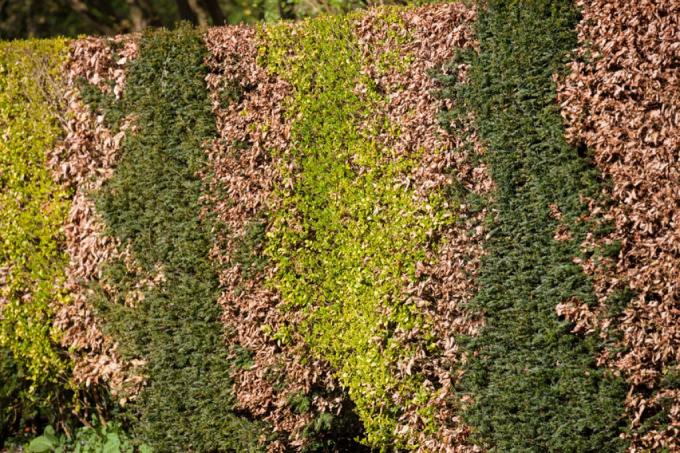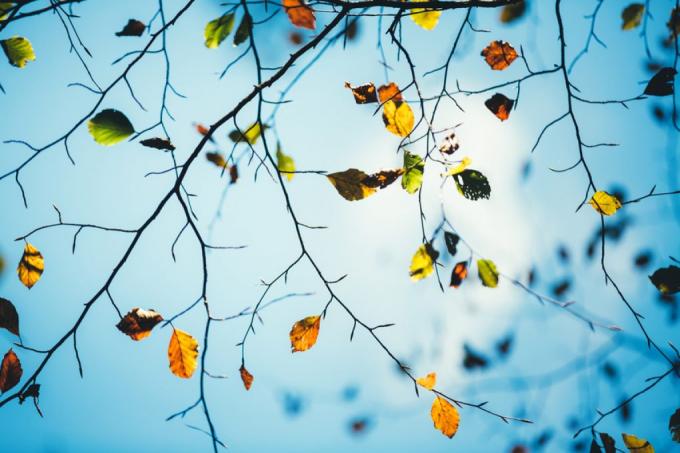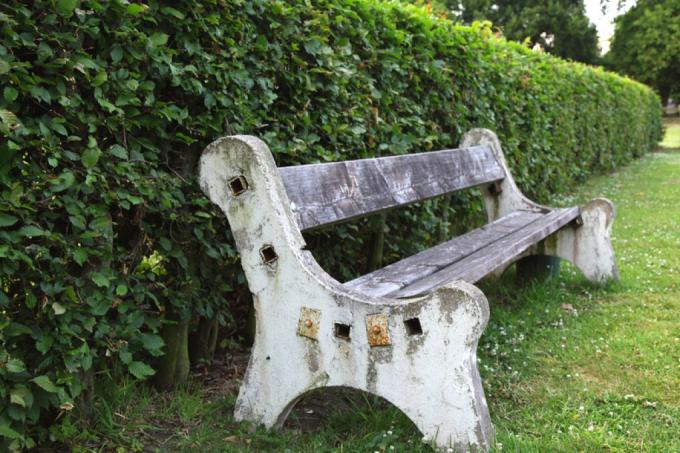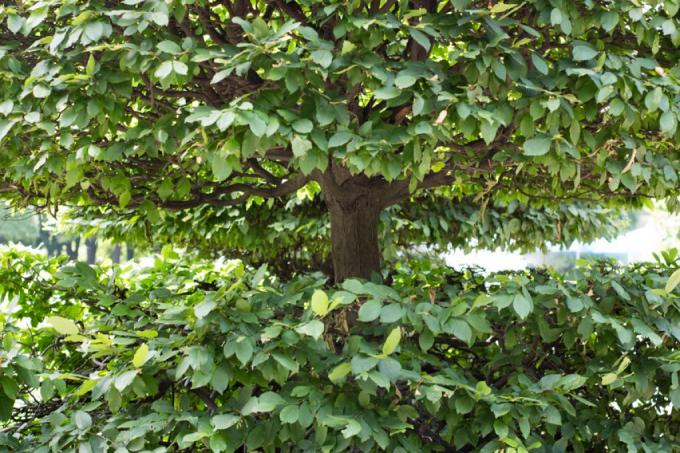AT A GLANCE
How do I recognize and treat fungal infestation on a beech hedge?
Fungal infestation on a beech hedge can be recognized by floury, white or brown deposits (powdery mildew) and blotchy discoloration (leaf spot disease) on the leaves. Remove affected plant parts and disinfect your cutting tools thoroughly.
How can I recognize fungal infestation on my beech hedge?
The most common causes of fungal infection on a beech hedge are infections with **powdery mildew* or leaf spot fungi. At mildew It is a fungal disease that spreads rapidly in sunny droughts. The leaf spot fungi Alternaria and Septoria are fair-weather fungi, whereas Ascochyta infestation occurs in damp, cool weather. Characteristic symptoms are:
- Powdery mildew: mealy-white, later brown leaf coating, leaves turn brown and dry up.
- leaf spot disease: black, brown, gray, red, yellow spots, 3-6 mm small with a light spot, spots converge and the foliage dies off.
also read
What to do if the beech hedge suffers from fungal attack?
The best way to combat fungal infestation on your beech hedge is to remove all of the affected ones Cut off plant parts. Please use a fresh one sharpened, clean garden or hedge trimmer,(€24.00 at Amazon*) which you meticulously disinfect before and after.
Also remove fallen leaves and twigs. Dispose of the infected plant material in the organic waste. Disposal on the compost carries the risk that the fungal spores will spread again in the garden if you take your plants with you compost soilfertilize or mulch.
Tip
Pests causing leaf spot
Leaf spots on beech hedges can also be due to pest infestation. The most common pests on hedge plants are spider mites, aphids and the beech ornamental aphid or beech wool aphid. Sticky substances on the leaves are symptomatic of the annoying rabble. In the early stages, you can fight the pests with a home remedy. Spray the beech hedge repeatedly until dripping with a solution of curd soap and water (1:9) with a dash of spirit.








